Mario Livio in Scientific American:
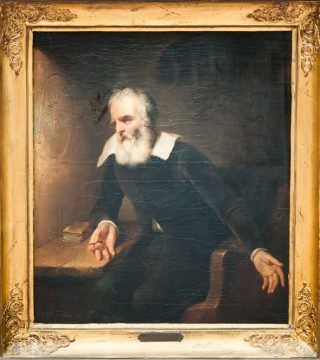 “And yet it moves.” This may be the most famous line attributed to the renowned scientist Galileo Galilei. The “it” in the quote refers to Earth. “It moves” was a startling denial of the notion, adopted by the Catholic Church at the time, that Earth was at the center of the universe and therefore stood still. Galileo was convinced that model was wrong. Although he could not prove it, his astronomical observations and his experiments in mechanics led him to conclude that Earth and the other planets were revolving around the sun. That brings us to “and yet.” As much as Galileo may have hoped to convince the Church that in moving Earth from its anointed position, he was not contradicting Scripture, he did not fully appreciate that Church officials could not accept what they regarded as his impudent invasion into their exclusive province: theology.
“And yet it moves.” This may be the most famous line attributed to the renowned scientist Galileo Galilei. The “it” in the quote refers to Earth. “It moves” was a startling denial of the notion, adopted by the Catholic Church at the time, that Earth was at the center of the universe and therefore stood still. Galileo was convinced that model was wrong. Although he could not prove it, his astronomical observations and his experiments in mechanics led him to conclude that Earth and the other planets were revolving around the sun. That brings us to “and yet.” As much as Galileo may have hoped to convince the Church that in moving Earth from its anointed position, he was not contradicting Scripture, he did not fully appreciate that Church officials could not accept what they regarded as his impudent invasion into their exclusive province: theology.
During his trial for suspicion of heresy, Galileo chose his words carefully. It was only after the trial, angered by his conviction no doubt, that he was said to have muttered to the inquisitors, “Eppur si muove”(“And yet it moves)”, as if to say that they may have won this battle, but in the end, truth would win out. But did Galileo really utter those famous words? There is no doubt that he thought along those lines. His bitterness about the trial; the fact that he had been forced to abjure and recant his life’s work; the humiliating reality that his book Dialogue Concerning the Two Chief World Systems had been put on the Church’s Index of Prohibited Books; and his deep contempt for the inquisitors who judged him continually occupied his mind for all the years following the trial. We can also be certain that he did not (as legend has it) mutter that phrase in front of the inquisitors. Doing so would have been insanely risky. But did he say it at all? If not, when and how did the myth about this motto start circulating?
More here.

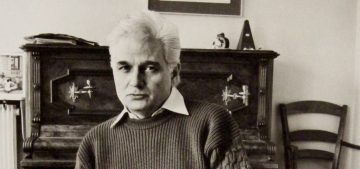 The question of where the Juifs d’Algérie, the community into which Jackie was born, fitted into Algerian society was, inevitably, a complex one. Derrida’s family were Sephardic, and claimed roots from Toledo in Spain. In 1870, Algerian Jews were granted French citizenship by the Crémieux Decree, which brought their rights in line with the rest of the pied-noir (black foot, i.e. wearing shoes) population of Algeria. The majority Muslim population had no such rights, and were subject to the Code de l’indigénat, which gave them, at best, second-class status before the law. Although tensions had not reached the scale that would lead to and accompany the Algerian War, they were already present. At the same cinemas where Aimé and Georgette had watched Chaplin, Algerians “clapped and cheered when the hero made stirring speeches about Swiss independence in William Tell and when the Foreign Legionnaire heroes in Le Hommes Sans Nom(The Men with No Name) were shot by Moroccan insurgents.”
The question of where the Juifs d’Algérie, the community into which Jackie was born, fitted into Algerian society was, inevitably, a complex one. Derrida’s family were Sephardic, and claimed roots from Toledo in Spain. In 1870, Algerian Jews were granted French citizenship by the Crémieux Decree, which brought their rights in line with the rest of the pied-noir (black foot, i.e. wearing shoes) population of Algeria. The majority Muslim population had no such rights, and were subject to the Code de l’indigénat, which gave them, at best, second-class status before the law. Although tensions had not reached the scale that would lead to and accompany the Algerian War, they were already present. At the same cinemas where Aimé and Georgette had watched Chaplin, Algerians “clapped and cheered when the hero made stirring speeches about Swiss independence in William Tell and when the Foreign Legionnaire heroes in Le Hommes Sans Nom(The Men with No Name) were shot by Moroccan insurgents.” As real border walls were being put up, so were metaphorical borders. The Urdu writers had been published freely in both countries until this point. There were hardly any Urdu literary journals at the time in India because Indian Urdu writers had published in Pakistan where the readership was larger; Urdu being Pakistan’s national language. The war changed that. New Urdu journals arose in India, most notably Shabkhoon launched by Shamsur Rahman Faruqi in Allahabad. Writers, Urdu or not, wanted to address the crisis of the war. They criticized the Progressives because their answers were old and dated. Marxists and Socialists were under attack in both Pakistan and India. In Pakistan, there was a call of national cultural unity, with Urdu at its center. Before this year, Bhasha Poetry, which freely took words from Indian languages other than Urdu was popular in Pakistan. After, the form quietly died.
As real border walls were being put up, so were metaphorical borders. The Urdu writers had been published freely in both countries until this point. There were hardly any Urdu literary journals at the time in India because Indian Urdu writers had published in Pakistan where the readership was larger; Urdu being Pakistan’s national language. The war changed that. New Urdu journals arose in India, most notably Shabkhoon launched by Shamsur Rahman Faruqi in Allahabad. Writers, Urdu or not, wanted to address the crisis of the war. They criticized the Progressives because their answers were old and dated. Marxists and Socialists were under attack in both Pakistan and India. In Pakistan, there was a call of national cultural unity, with Urdu at its center. Before this year, Bhasha Poetry, which freely took words from Indian languages other than Urdu was popular in Pakistan. After, the form quietly died. Biologists like to think of themselves as properly scientific behaviourists, explaining and predicting the ways that proteins, organelles, cells, plants, animals and whole biota behave under various conditions, thanks to the smaller parts of which they are composed. They identify causal mechanisms that reliably execute various functions such as copying DNA, attacking antigens, photosynthesising, discerning temperature gradients, capturing prey, finding their way back to their nests and so forth, but they don’t think that this acknowledgment of functions implicates them in any discredited teleology or imputation of reasons and purposes or understanding to the cells and other parts of the mechanisms they investigate.
Biologists like to think of themselves as properly scientific behaviourists, explaining and predicting the ways that proteins, organelles, cells, plants, animals and whole biota behave under various conditions, thanks to the smaller parts of which they are composed. They identify causal mechanisms that reliably execute various functions such as copying DNA, attacking antigens, photosynthesising, discerning temperature gradients, capturing prey, finding their way back to their nests and so forth, but they don’t think that this acknowledgment of functions implicates them in any discredited teleology or imputation of reasons and purposes or understanding to the cells and other parts of the mechanisms they investigate.
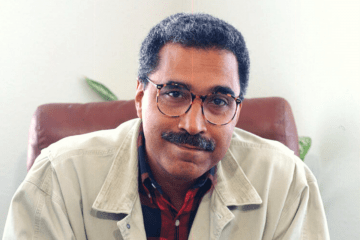 Shelby Steele is experiencing a revival. For over 30 years, the controversial black American essayist and culture critic has consistently produced some of the most original insights to be found on the precarious issue of race in America and has been met with reactions that range from reverence to revulsion. Usually, it’s one reaction or the other. To his critics, Steele is a race traitor, a contrarian black conservative who makes a living assuaging the guilty consciences of whites at the expense of his own people. To his admirers, he is a lone voice of clarity in the chaos of America’s racial discourse who, at 74 years of age, continues to speak uncomfortable and disconcerting truths to power. But his greatest strength may turn out to be a knack for anticipation. As the social upheavals inspired by America’s “racial reckoning” rage on, Steele’s work now looks prescient—it identified the underlying forces that would eventually shape our explosive cultural moment, and offers a more honest accounting of our past and present.
Shelby Steele is experiencing a revival. For over 30 years, the controversial black American essayist and culture critic has consistently produced some of the most original insights to be found on the precarious issue of race in America and has been met with reactions that range from reverence to revulsion. Usually, it’s one reaction or the other. To his critics, Steele is a race traitor, a contrarian black conservative who makes a living assuaging the guilty consciences of whites at the expense of his own people. To his admirers, he is a lone voice of clarity in the chaos of America’s racial discourse who, at 74 years of age, continues to speak uncomfortable and disconcerting truths to power. But his greatest strength may turn out to be a knack for anticipation. As the social upheavals inspired by America’s “racial reckoning” rage on, Steele’s work now looks prescient—it identified the underlying forces that would eventually shape our explosive cultural moment, and offers a more honest accounting of our past and present. Baker has long been intrigued by the fact that the declassified versions of government documents concerning bioweapons from this era that are available still tend to be heavily censored. The continued secrecy, for him, raises a striking question: What other information do these documents contain that remains so sensitive after all this time that the US government continues to hide it from the American public and the rest of the world under these redactions?
Baker has long been intrigued by the fact that the declassified versions of government documents concerning bioweapons from this era that are available still tend to be heavily censored. The continued secrecy, for him, raises a striking question: What other information do these documents contain that remains so sensitive after all this time that the US government continues to hide it from the American public and the rest of the world under these redactions? In late August, the singer, songwriter, and guitarist Adrianne Lenker stood beside a creek in upstate New York, watching the water move. The day before, Lenker, who is twenty-nine, had packed up the Brooklyn apartment she’d been sharing with two roommates. She was preparing to haul a vintage camping trailer across the country to Topanga Canyon, on the west side of Los Angeles, where her band,
In late August, the singer, songwriter, and guitarist Adrianne Lenker stood beside a creek in upstate New York, watching the water move. The day before, Lenker, who is twenty-nine, had packed up the Brooklyn apartment she’d been sharing with two roommates. She was preparing to haul a vintage camping trailer across the country to Topanga Canyon, on the west side of Los Angeles, where her band,  We “data people” have all been burnt by polling – and it hurts. In Britain, America and elsewhere, there have been enough high profile “misses” by the industry to give anyone cold feet about relying on polls as the sole metric for how an election might play out. On balance, however, polling has good form for calling most races right – and is becoming increasingly accurate. If this comes as a surprise, it might be because humans often process negative memories (poll misses) more thoroughly than they do positive (accurate polls). Perhaps conscious that history may repeat itself, betting markets are
We “data people” have all been burnt by polling – and it hurts. In Britain, America and elsewhere, there have been enough high profile “misses” by the industry to give anyone cold feet about relying on polls as the sole metric for how an election might play out. On balance, however, polling has good form for calling most races right – and is becoming increasingly accurate. If this comes as a surprise, it might be because humans often process negative memories (poll misses) more thoroughly than they do positive (accurate polls). Perhaps conscious that history may repeat itself, betting markets are 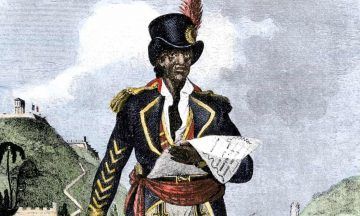 On January 1804, the West Indian island of Saint-Domingue became the world’s first black republic. The Africans toiling on the sugar-rich plantations overthrew their French masters and declared independence. The name Saint-Domingue was replaced by the aboriginal Taíno Indian word
On January 1804, the West Indian island of Saint-Domingue became the world’s first black republic. The Africans toiling on the sugar-rich plantations overthrew their French masters and declared independence. The name Saint-Domingue was replaced by the aboriginal Taíno Indian word 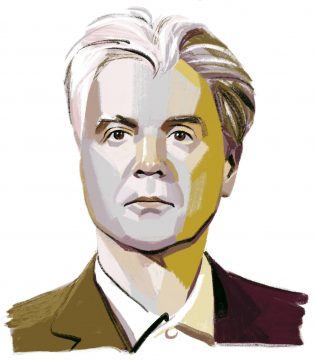
 Astronomers rocked the cosmological world with the 1998 discovery that the universe is accelerating. Well-deserved Nobel Prizes were awarded to Saul Perlmutter, Brian Schmidt, and today’s guest Adam Riess. Adam has continued to push forward on investigating the structure and evolution of the universe. He’s been a leader in emphasizing a curious disagreement that threatens to grow into a crisis: incompatible values of the Hubble constant (expansion rate of the universe) obtained from the cosmic microwave background vs. direct measurements. We talk about where this “Hubble tension” comes from, and what it might mean for the universe.
Astronomers rocked the cosmological world with the 1998 discovery that the universe is accelerating. Well-deserved Nobel Prizes were awarded to Saul Perlmutter, Brian Schmidt, and today’s guest Adam Riess. Adam has continued to push forward on investigating the structure and evolution of the universe. He’s been a leader in emphasizing a curious disagreement that threatens to grow into a crisis: incompatible values of the Hubble constant (expansion rate of the universe) obtained from the cosmic microwave background vs. direct measurements. We talk about where this “Hubble tension” comes from, and what it might mean for the universe. The period since the global financial crisis has seen increased recognition, sparked in particular by the
The period since the global financial crisis has seen increased recognition, sparked in particular by the  Mutations occur in our cells throughout life. Although most mutations are harmless, they accumulate in number in our tissues as we age, and if they arise in key genes, they can alter cellular behaviour and set cells on a path towards cancer. There is also speculation that somatic mutations (those in non-reproductive tissues) might contribute to ageing and to diseases unrelated to cancer. However, technical difficulties in detecting the mutations present in a small number of cells, or even in single cells, have hampered research and limited progress in understanding the first steps in cancer development and the impact of somatic mutation on ageing and disease.
Mutations occur in our cells throughout life. Although most mutations are harmless, they accumulate in number in our tissues as we age, and if they arise in key genes, they can alter cellular behaviour and set cells on a path towards cancer. There is also speculation that somatic mutations (those in non-reproductive tissues) might contribute to ageing and to diseases unrelated to cancer. However, technical difficulties in detecting the mutations present in a small number of cells, or even in single cells, have hampered research and limited progress in understanding the first steps in cancer development and the impact of somatic mutation on ageing and disease.